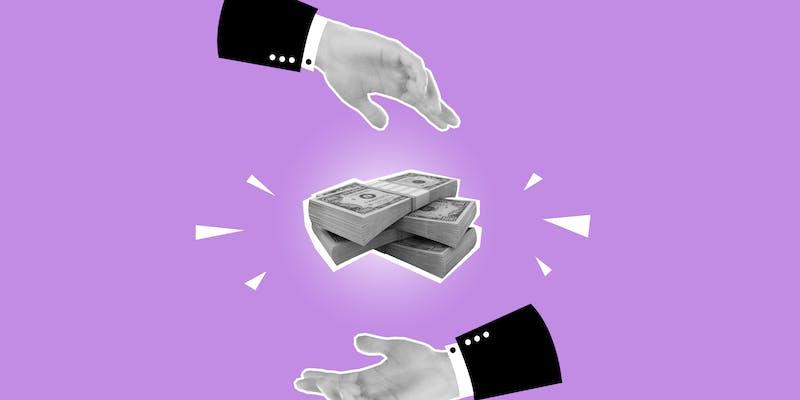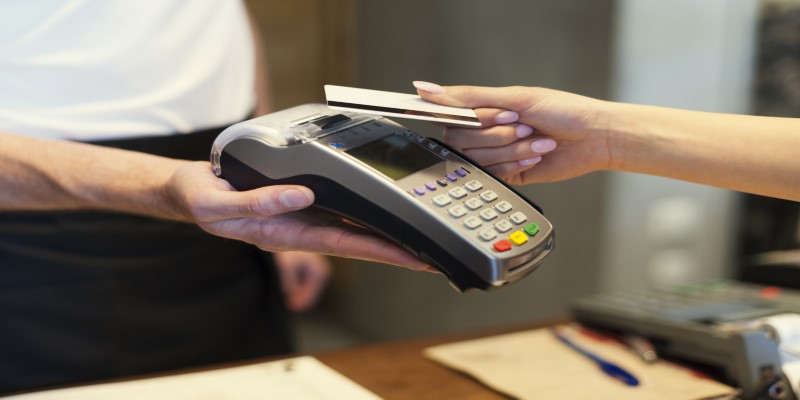A cross rate within the currency exchange market acts as the exchange rate indicator between two currencies valued against a common third currency.
This third currency is the US dollar, a universal peg in the forex market. A cross rate comes into play when currencies are traded directly with each other, bypassing the need to convert into US dollars.
Cross Rate Transactions
Let’s break down the concept of cross rates with a practical scenario. Consider an individual looking to exchange British pounds for Euros. To determine the cross rate, one would examine how these currencies stack against the US dollar.
The cross-rate calculator becomes essential if the current market rate is 1.25 US dollars for every pound and 1.07 US dollars for each Euro. By inputting these figures, the calculator helps ascertain the direct exchange rate between the pound and the Euro, reflecting the actual market value of the trade without the US dollar as an intermediary.
Calculating Cross Rates
To work out cross rates, you don’t need complex equations; a basic mathematical approach will suffice. It’s about comparing two currencies against a standard benchmark, usually the U.S. dollar. Here’s a step-by-step guide, taking the Euro (EUR) and the British Pound (GBP) as an example, using the U.S. Dollar (USD) as the reference point:
- Identify the EUR/USD exchange rate. Assuming 1 Euro equals 1.10 U.S. dollars.
- Determine the GBP/USD exchange rate. Let’s say 1 British Pound trades for 1.30 U.S. dollars.
- Apply a simple division using these rates: Cross Rate (EUR/GBP) = (EUR/USD) ÷ (GBP/USD). In numbers, it looks like 1.10 ÷ 1.30 equals approximately 0.8462.
This figure, 0.8462, represents the amount of British Pounds you would exchange for one Euro, bypassing the U.S. dollar. A cross rate calculator can simplify this process, instantly providing the conversion rate without manual calculations.
Understanding the importance of cross rate calculations is crucial for investors and businesses that deal with multiple currencies. For instance, knowing the aud usd cross rate, is valuable for traders focusing on the Australian and American markets, providing insight into the value exchange between the Australian dollar and other major currencies without direct reference to the U.S. dollar.
Major Cross Rate Currency Pairs Examples
In the forex arena, some currency pairs command more attention and volume than others due to their economic stability and frequency of trade. The EUR/JPY and EUR/GBP pairs stand out as significant, favored by traders for their liquidity and the financial strength of the nations they represent.
The absence of the US dollar in these transactions highlights their status as accurate cross rates. According to the latest data, these pairs are esteemed for their volume, featuring prominently within the top 10 most actively traded currency pairs. A cross rate calculator can quickly provide traders real-time information on these pairs, enabling informed trading decisions.
As of the latest figures, the EUR/JPY and EUR/GBP pairs remain the only cross rate pairs within this elite trading group. Traders frequently turn to the cross rate calculator to monitor the fluctuations and trends of these pairs, particularly as the Euro often serves as the base currency in these exchanges.
Minor Currency Exchange Rates Examples
In the currency exchange market, some currency pairs like the Swiss franc to Japanese yen (CHF/JPY) and the British pound to Swiss franc (GBP/CHF) see less action. These are known as minor cross rates. Their trade volumes are lower, but they hold their own by fulfilling specific financial needs and strategies.
As of mid-2022, for example, the exchange ratio of the New Zealand dollar to the Australian dollar (NZD/AUD) stood at 1.11. It's a subtle yet significant detail that the Australian dollar typically takes the lead in this pair due to its relatively more robust economic indicators. This selection influences the aud usd cross rate, reflecting Australia's more dominant financial position.
For anyone using a cross rate calculator, these details are crucial. The calculator aids in determining the actual rate between two currencies without using the USD as a reference, a process essential for investors and businesses involved in these economies. It's not just about the numbers; it's about understanding the economic strength behind them.
Minor cross rates, however, tend to face even wider spreads, underlining the importance of accurate and timely information. When someone inputs data into a cross rate calculator, the precision of the spread can significantly influence the outcome.
For pairs like aud usd cross rate reflects market sentiment and economic stability. Therefore, the importance of cross rate understanding becomes clear, as it provides insights into the health of currency markets beyond direct USD comparisons.
Practical Tips for Traders Related to Cross Rates

Engaging with cross rates requires a keen eye and a clear strategy, especially since they often involve more complex calculations and a deeper understanding of market dynamics. Here are practical tips for anyone looking to trade in this space:
Stay Informed
Currency values fluctuate based on various factors, including economic indicators, political stability, and market sentiment. Keeping abreast of global news can provide valuable insights into potential rate movements.
Understand the Pairs
Know the countries involved in your chosen currency pair, including their trade relationships and economic policies. This can significantly influence exchange rates.
Use Technology
Employ forex trading platforms and currency converters that offer real-time cross rate calculations to make informed decisions swiftly.
Final Takeaway
Currency pairs like the Euro to British Pound (EUR/GBP) and Euro to Japanese Yen (EUR/JPY) are heavily used in trading circuits due to their economic strength and global financial prominence.
Any person or entity interested in currency trading or international business must understand these rates. Understanding and using cross rates helps market participants make informed decisions, manage risks, and capitalize on currency fluctuations in a dynamic global marketplace.



